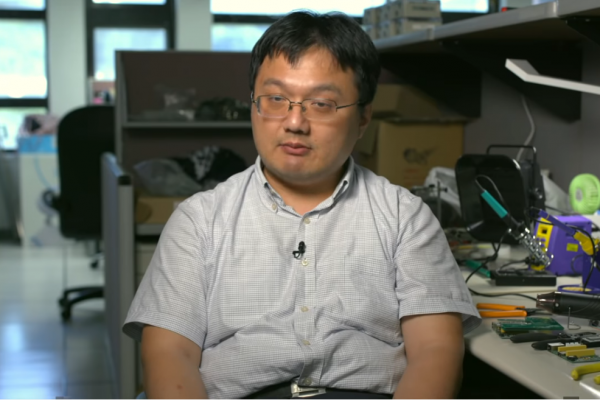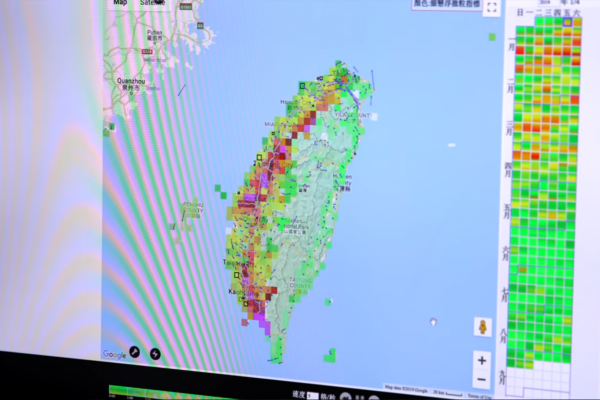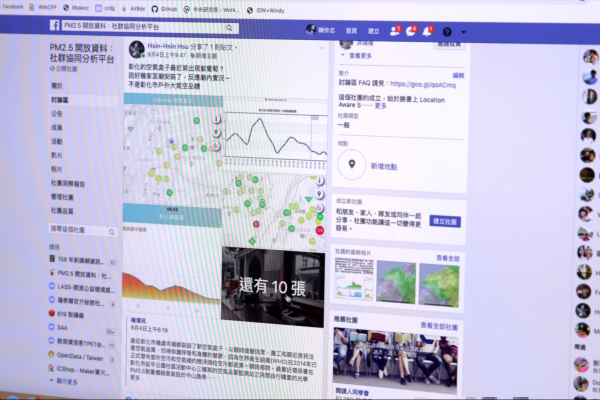In the tech-driven world spurred by the advent of COVID-19, people are warming up to the idea of social innovation to achieve real success driven by data and open-source collaboration.
But as with any collaboration, support is hard to achieve. Not only would the initiating members have to get support from the tech community, they must find a way for the society to participate and the government to lend their support in making their effort a success.
And one good example of this is EdiGreen’s AirBox by Edimax in Taiwan.
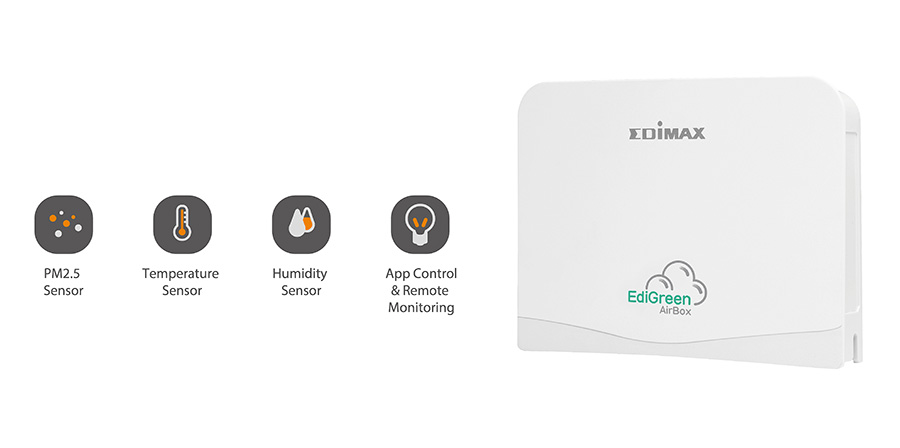
The AirBox by Edimax. Image via Edimax
What is AirBox
AirBox is a project involving the collaboration between Academia Sinica, the community and a private industry operator (Edimax) to provide physical monitoring equipment to schools and citizens for PM2.5 sensing (air quality), temperature, humidity, and upload the collected information to the cloud platform. Information is integrated to the map, allowing users to monitor the air quality information of each other through the web or the application.
AirBox is the brainchild of Chen Ling-jyh, a research fellow at Academia Sinica as well as Hsu Wuulong who is a founder of LASS, an online community for location-awareness sensing systems. Chen and Hsu met in 2015 and worked together on an open-source air quality sensor. It started out with connecting with a group of makers to build the AirBoxes at their own expense and to install the AirBoxes in as many locations as possible in the country.
Taipei added the AirBox to its Smart City project to improve prediction accuracy of PM2.5 level, helping to boost the project further by gaining the attention of the public through the media..
Without such collaboration, the entire project could not have been a success.
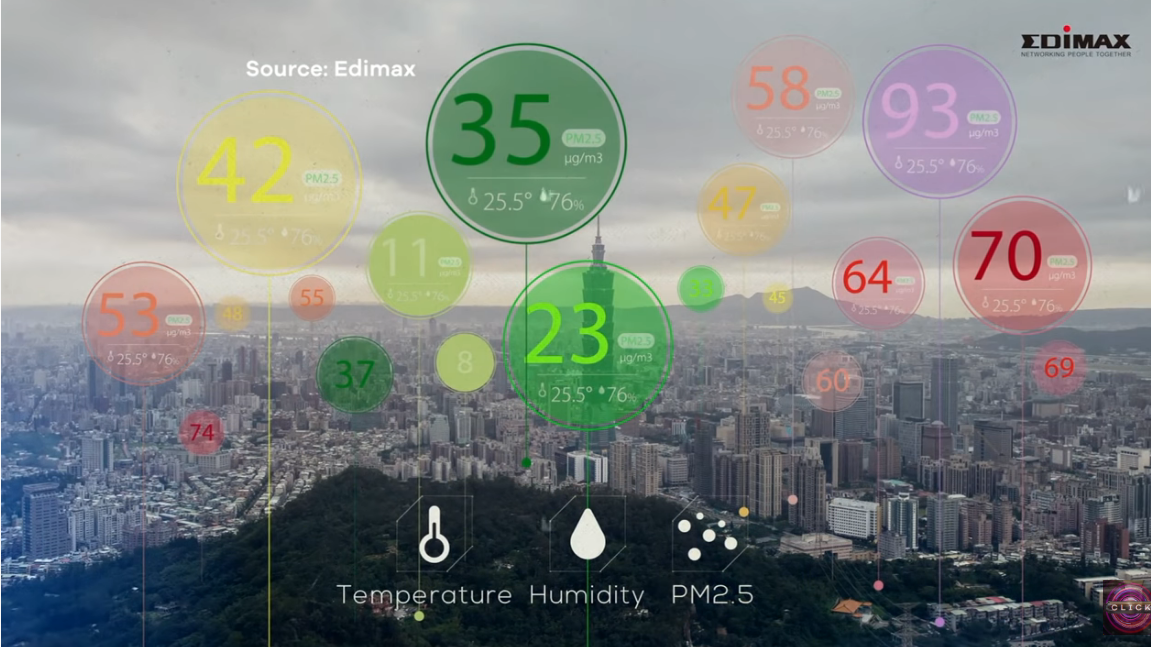
Image is a screen capture via BBC Click’s Inside Taiwan’s Tech Industry
Why AirBox
How would someone know when the air pollution level is at a dangerous level, when they should be wearing a face mask or choose to avoid engaging in outdoor activities in order to keep themselves safe? Usually, the PM2.5 reading would be included in air quality reports from the environmental authorities. But where is this data coming from, and how accurate is it for the community?
A research titled An Empirical Study of PM2.5 Forecasting Using Neural Network was published in August 2017 by Chen Ling-jyh, Sachit Mahajan and Tzu-Chieh Tsai to explore the possibilities of having hourly forecast of PM2.5, considering the fact that the right forecast model could improve prediction accuracy.
In the research, data used was gathered from the real world data from the AirBox project, showing that the proposed method of using Neural Netwoek Autoregression (NNAR) method accurately did the prediction with significantly low error, whilst providing a comparative analysis of two other models (Holt-Winters and ARIMA, autoregressive integrated moving average).
The Challenges
One of the challenges faced by the team was when the environmental engineers started disputing the accuracy of the AirBox, as both AirBox and the air testing station both were measuring the PM2.5 level. But the measuring method differs. Environmental engineers would take the average of the reading over a period of one hour or more from the data of air testing stations, whereas AirBox utilizes the microsensors to record the value over a 5-minute period. By doing so, the reading could easily be influenced by other external events such as a passing truck carrying dirt, or even a smoker standing next to the device.
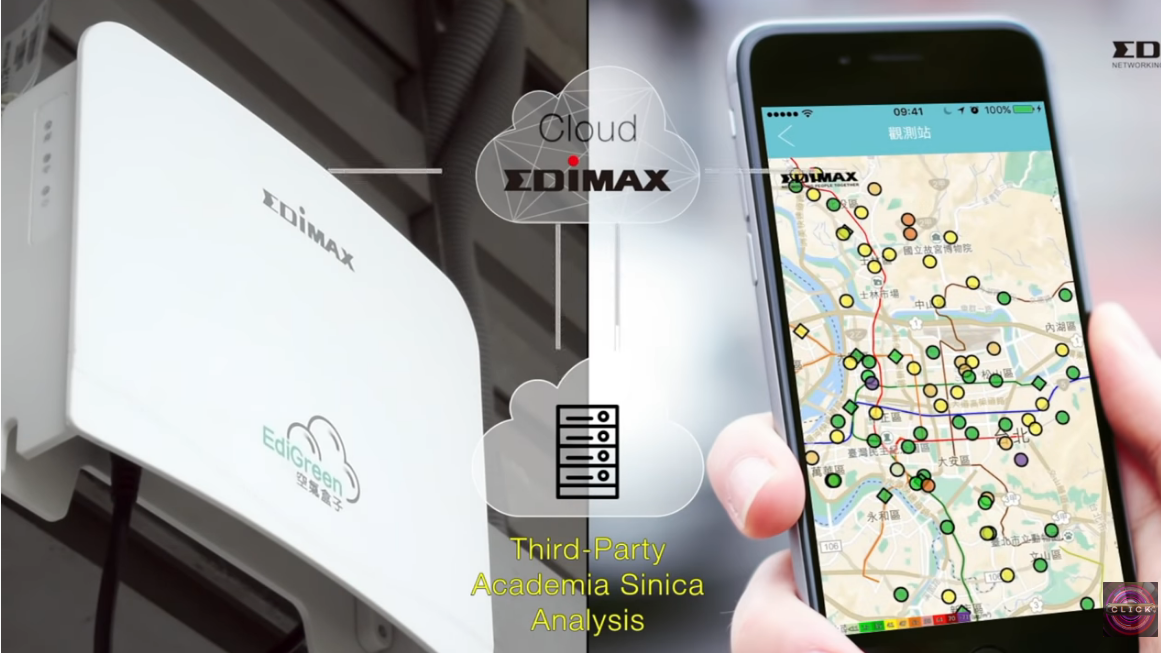
The AirBox device as well as the application that users could access for information regarding air quality. Image via Edimax website.
Difference In a Nutshell
To put it simply, the “end users” are different. Air testing stations collect data on a wide range of atmospheric indicators, while it might serve well as a general data, it might not meet the needs of the public. On the other hand, AirBox utilizes IoT (Internet of Things) as a mean to acquire information of air quality in real time whilst analyzing the data from an information engineering and big data perspective. For the public, this data would be more in their direct interest. But in no way these two are incompatible, but instead could complement each other for better analyses.
The Benefits
With real-time data, users would be kept well-informed of the air pollution around their area. Besides that, data gathered from AirBox could potentially assist in analyzing the origin of pollution, by analyzing the change of reading at different AirBox sites at different periods of time.
As researchers are looking into the relationship between PM2.5 and ill health conditions such as asthma and heart disease, more real time data from specific places could potentially help researchers gain more accurate data.
In an interview with BBC reporters on BBC Click, Chen Ling-Jyh introduced a surprising discovery of the reason for the ‘purple reading’, or what they call it bad pollution. They found that traditional incense burning was the culprit of the pollution. As a result, two well-known temples in Taiwan, namely the Xingtian Temple and the Longshan Temple, no longer have incense burners. On top of that, AirBox was installed in these locations.
Professor Chen Ling-jyh, a fellow researcher at Academia Sinica. Air quality of Taiwan populated on the map. Discovery of the source of pollution shared on Facebook, a social networking site. Image of the incense burner in a Taiwanese temple. All images are screen captures via BBC Click’s Inside Taiwan’s Tech Industry
The main learning point of the project was simple: the solution to pollution starts from understanding air quality. AirBox gathers data to the people, and through data the members of the public are given the power to improve air quality though changing their lifestyles.
Keeping it Open Source
The value of keeping AirBox open source outweighs the value of patenting the item. While it was not a difficult device to produce, proprietary system would not have the ability to scale and mature. But with the software being available to the public, more people could facilitate the growth.
Owing its success to their transparency in keeping information open-source, AirBox is being exported overseas to countries like Singapore, Korea and the US.
Data Visualization
With simple color coding, people could understand the air quality better. Schools could make decisions on postponing outdoor activities from the air quality information, to ensure students would not be unnecessarily subjected to pollution.
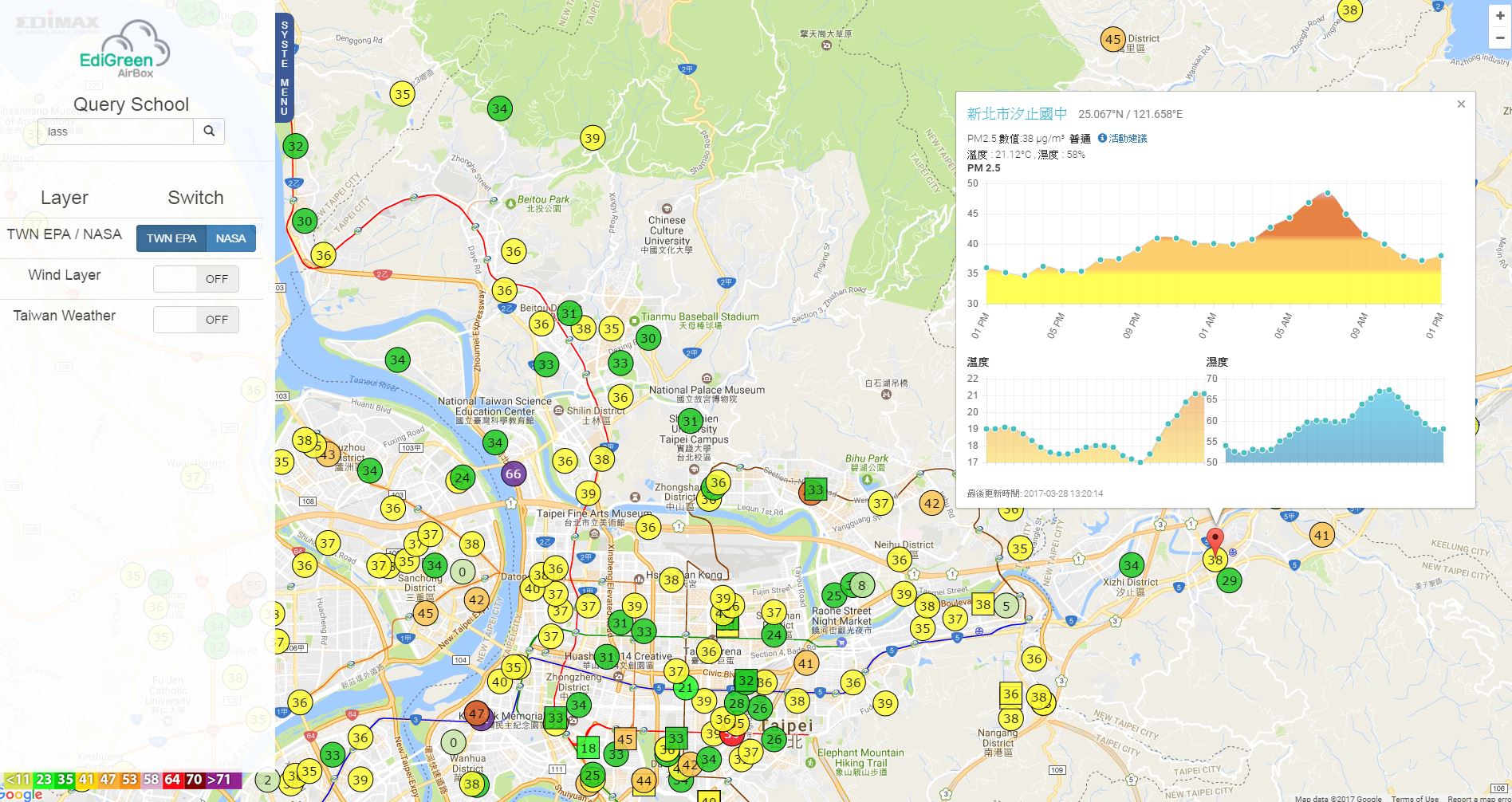
Schools could also gain access to air quality data in their surrounding area to facilitate better decision making. Image via Edimax
In Conclusion
In a data-driven society, information is used as a nudge to encourage people toward making better, informed decisions. The reliability of data is important to gain the trust of all stakeholders.
When trust between the government, academia, industry operator and the general public is created, everyone could do their part in increasing the quality of life. And this is exactly what the AirBox project in Taiwan achieved. The future is COLLABORATION.
Source: Mahajan, Sachit & Chen, Ling-Jyh & Tsai, Tzu-Chieh. (2017). An Empirical Study of PM2.5 Forecasting Using Neural Network. 10.1109/UIC-ATC.2017.8397443.
Note: AirBox is not to be confused with airbox in the car (the empty chamber on the inlet of most combustion engine)

